Uncategorized
Bali Weaves: Exploring the Intricate Tapestry of Balinese Textile Heritage
Bali isn’t only popular for its natural beauty, but also for its local community that has been able to uphold traditional values amidst modernity and globalization. This is reflected by the use of traditional clothing in daily activities. For centuries, Bali’s woven textiles have been a manifestation of the Tri Hita Karana philosophy, providing a guiding principle for the Balinese people in shaping their lives. This can be seen in the variety of motifs that symbolize the relationship between humans, God, and nature. Bali’s woven textiles exhibit regional variations, showcasing a diverse array of techniques and distinctive motifs. Takala has meticulously curated and compiled an assortment of the diverse types of Balinese weaving, presenting a comprehensive overview of this rich tradition.
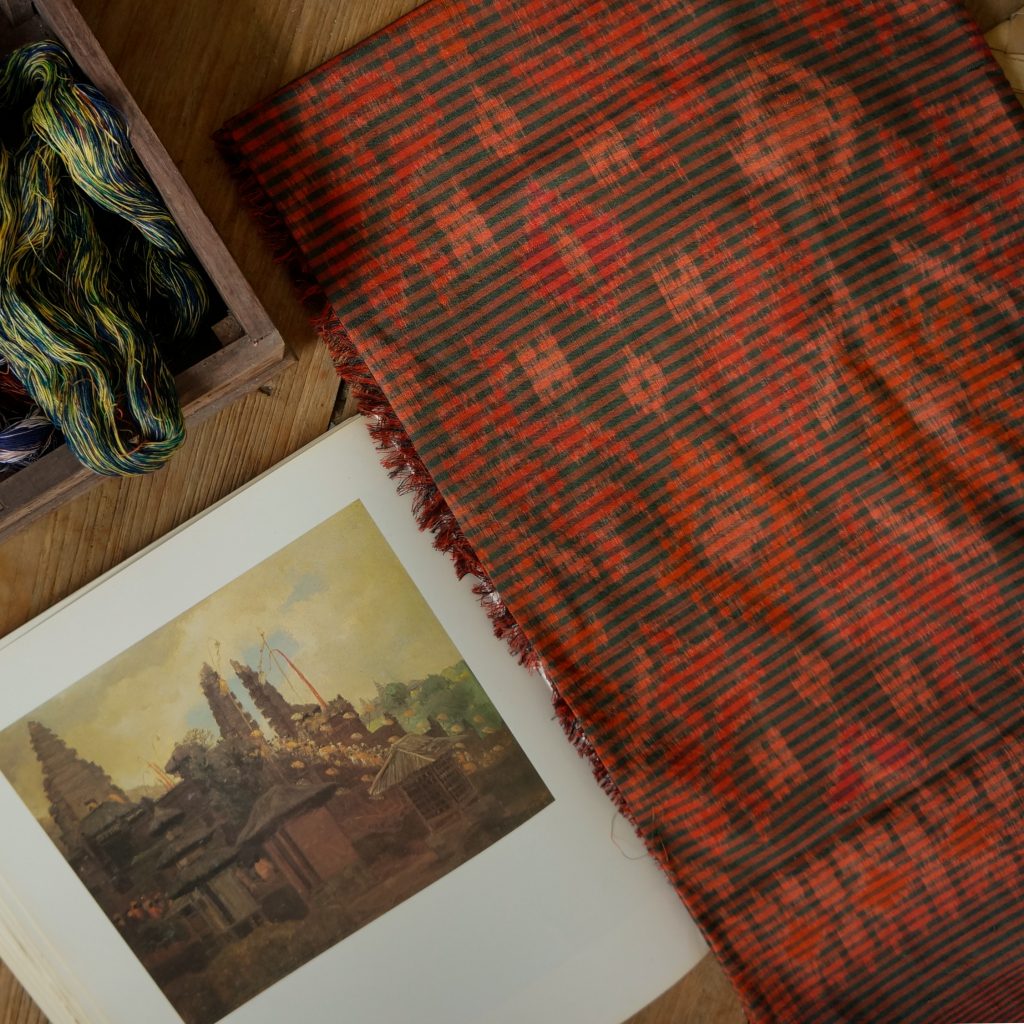
- Endek
Endek comes from the word ‘gendekan’ or ‘ngendek’ which means still or fixed, not changing color. This is because the making of endek fabric involves the ikat technique. In the dyeing process, the tied threads don’t change color. This condition is called ‘ngendek’. Endek fabric is produced in various regions in Bali, including Karangasem, Gianyar, Klungkung, Denpasar, Buleleng, and Jembrana. The motifs found on endek fabric include figurative, decorative, flora, and fauna. Geometric motifs are the oldest and used as symbols of the Balinese beliefs.
Endek fabric has been known since the 16th century during the reign of King Dalem Watugerrong in Gelgel, Klungkung. In the past, endek fabric was sacred and only worn during traditional ceremonies. Nowadays, endek fabric can be worn in daily activities. Conversely, certain motifs like patra and encak saji retain their sacred status and are predominantly reserved for religious ceremonies as a form of reverence for The Creator. In contrast, motifs inspired by natural elements and wayang characters are deemed suitable for everyday use.
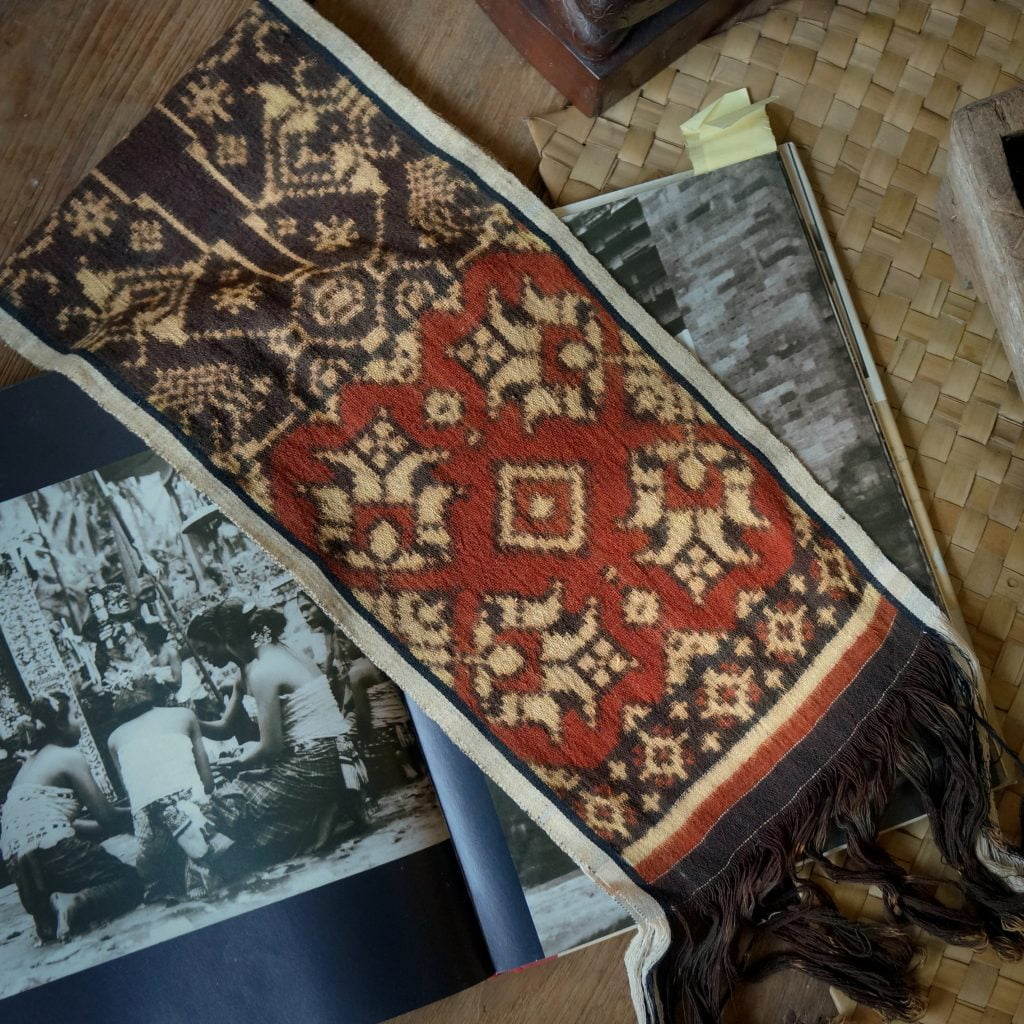
- Gringsing
Gringsing fabric has been developed since the 11th century and has become the typical attire of the Tenganan village. The term ‘gring’ translates to sick, whereas ‘sing’ means not. Therefore, the term ‘gringsing’ conveys the meaning of not being sick. In accordance with its meaning, gringsing fabric is believed to possess the power to protect the wearer from diseases and disaster.
There are several motifs in gringsing fabric, including cemplong, cecempakan, lubeng, batung, tuhung, sitan pegat, pitaram, wayang, and batun cagi. Among all the motifs, the wayang motif is considered sacred because this motif is believed to have been handed down directly by the God Indra.
The process of making gringsing fabric involves the double ikat technique. The dyeing process takes about three months. Gringsing fabric only uses three colors: red symbolizes fire, yellow/white symbolizes air, and black symbolizes water. These three colors reflect the Hindu concept of Tri Murti: Brahma, Vishnu, and Shiva.
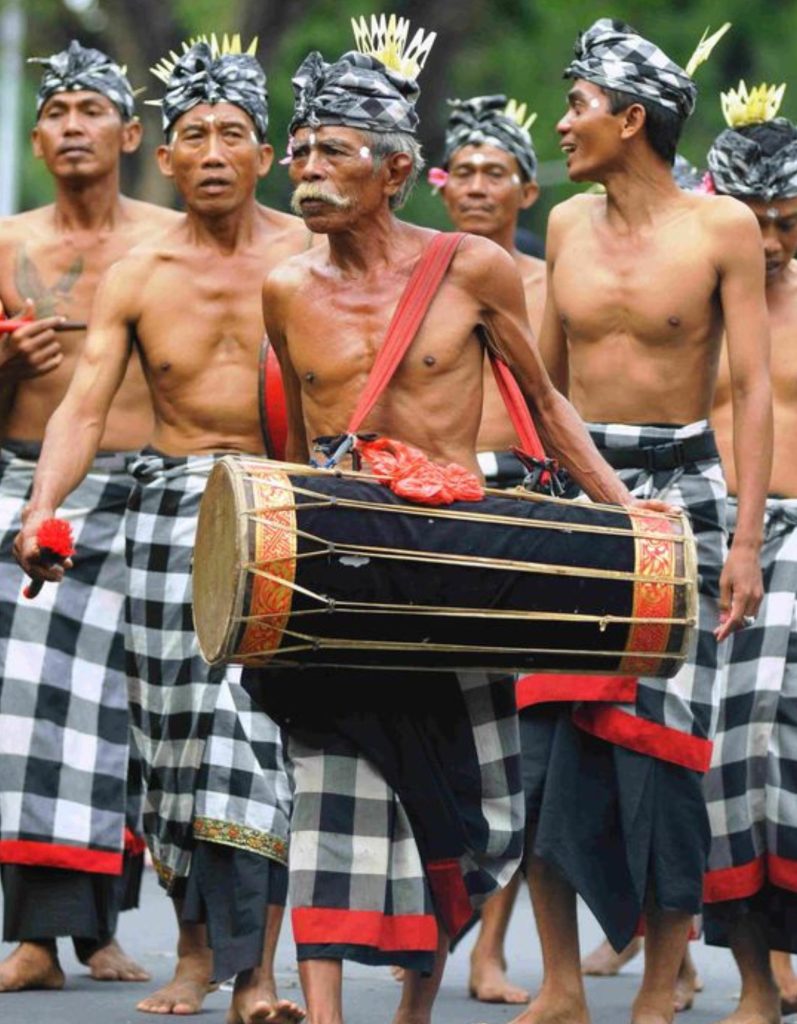
- Poleng
The poleng motif is a pattern of black and white resembling a chessboard. In Balinese, ‘poleng’ refers to an object with black and white checkered motif. This motif is often installed on large trees, pelinggih, and statues in Bali. The poleng motif is rarely worn in traditional clothing but has become the distinctive attire of pecalang (traditional Balinese security).
The poleng motif symbolizes the balance between purusha and prakerti. Purusha represents the subtle body (jiwatman), while prakerti represents the physical body. Poleng is additionally linked to the concept of rwa bhineda, represented by the dualism of black and white colors.
Traditionally, men are more inclined to wear poleng in their attire compared to women. In men’s clothing, poleng conveys positive significance, while in women’s clothing, it bears a negative connotation due to its association with the Calonarang myth. Consequently, poleng is more commonly chosen by men than women in their dress.
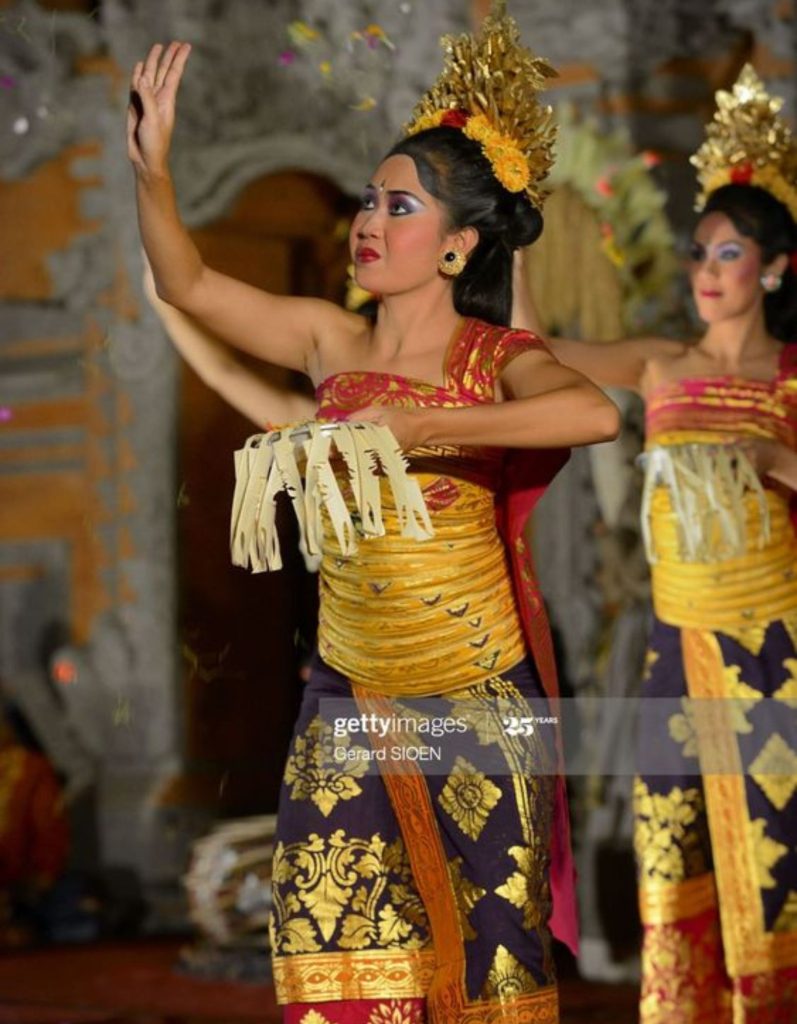
- Prada
Prada fabric is a Balinese fabric known for its luxurious appearance, characterized by its golden color. Historically, prada fabric featured authentic gold, but contemporary artisans now employ golden-hued threads in its production. The woven patterns in prada fabric typically portray flora and fauna. Prada fabric is commonly worn by Balinese dancers during performances.
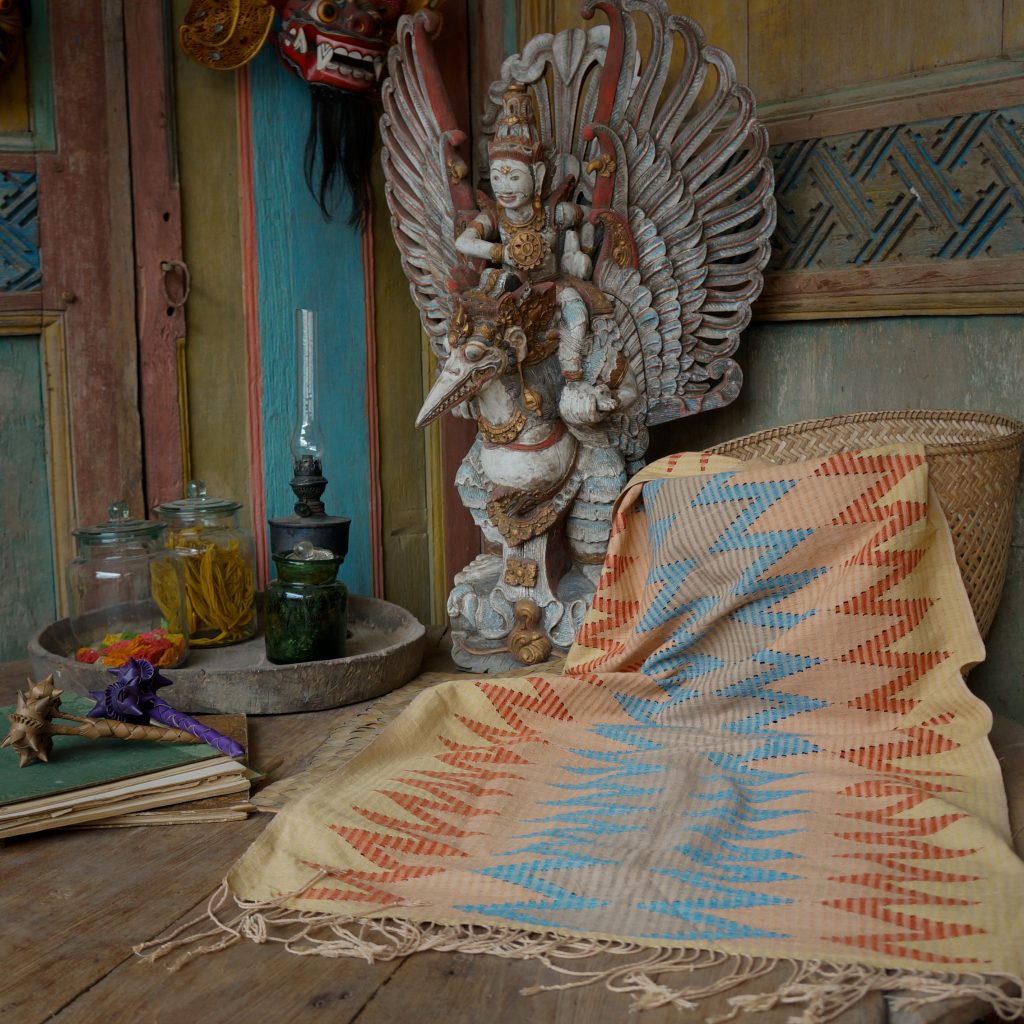
- Rangrang
Rangrang fabric originated from Nusa Penida. The name ‘rangrang’ comes from the word hollow which refers to the condition of the woven fabric. The holes in rangrang fabric symbolizes transparency. Besides its perforated texture, this fabric is also known for its zigzag pattern inspired by the geographical condition of the origin of its place, namely mountainous and hills. Initially employed solely as a religious ceremony accessory, rangrang fabric has evolved to serve diverse purposes beyond its original religious context.
The exposition above underscores the diversity and uniqueness of weaving crafts in Bali, each distinguished by its own set of characteristics. Unfortunately, the younger generation in Bali appears to be losing interest in the art of weaving, resulting in a decline in the number of skilled weavers. To counteract this decline and actively contribute to the preservation of Balinese woven fabrics, individuals can play a crucial role by incorporating these exquisite textiles into their daily attire. This not only celebrates the cultural legacy embedded in these fabrics but also supports the continuity of this time-honored craft.
Bibliography
Astiti, Ni Putu., & Panggabean, R. (2013). Eksplorasi ragam hias tenun rangrang. Jurnal tingkat sarjana bidang senirupa dan desain.
Rizqia, M., Munawaroh, A., Damayanti, A., & Falah, A. (2021). Innovation based on Gringsing weaving motifs Pegringsingan village in the form of fashion. Cultural art international journal, 1(1), 25-31.
Ulum, H. (2021, 16 December). Kain endek: Potensi bangkitnya ekonomi Bali di tengah pandemi. Dikjen Kemenkeu. Retrived from https://www.djkn.kemenkeu.go.id/kpknl-denpasar/baca-artikel/14495/Kain-Endek-Potensi-Bangkitnya-Ekonomi-Bali-di-Tengah-Pandemi.html#:~:text=Nama%20%E2%80%9CEndek%E2%80%9D%20diambil%20dari%20kata,persaudaraan%2C%20dan%20juga%20cindera%20mata.


